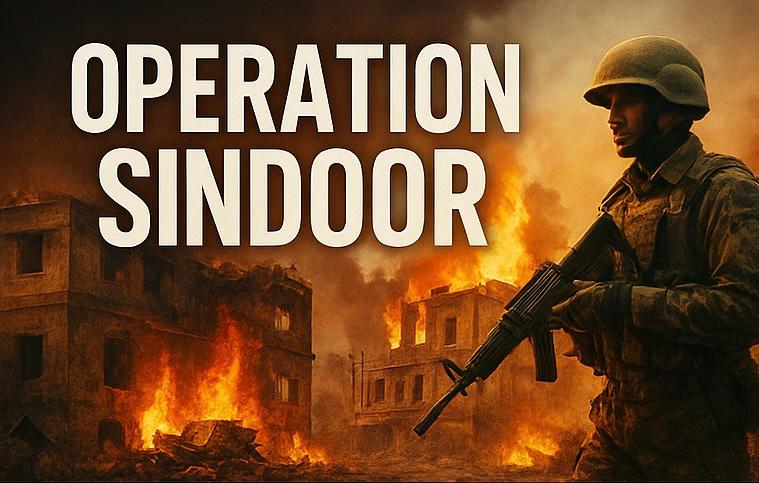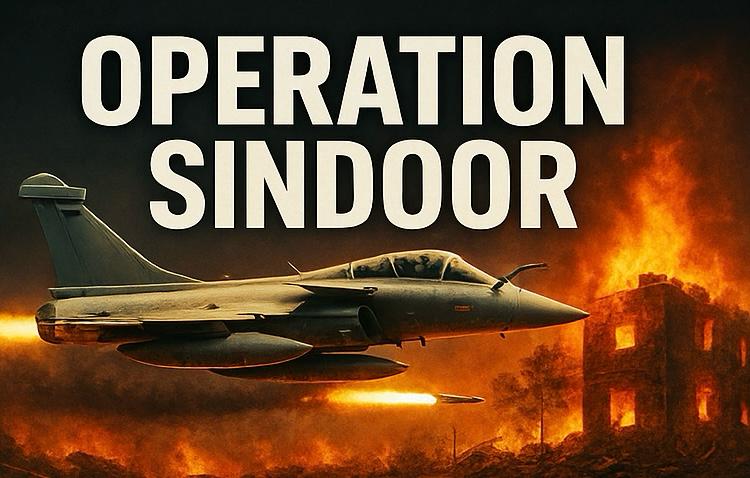
Operation Sindoor (also spelled Sindur) was a significant military action undertaken by India on May 6–7, 2025, in response to a devastating terrorist attack in Indian-administered Kashmir. This operation marked a critical escalation in the long-standing tensions between India and Pakistan, both nuclear-armed nations. Below is a comprehensive overview of Operation Sindoor, structured topic by topic:
⸻
- Background: The Pahalgam Attack
On April 22, 2025, a terrorist attack occurred in Pahalgam, a popular tourist destination in Indian-administered Kashmir. The attack resulted in the deaths of at least 28 civilians, predominantly Hindu pilgrims. The Indian government attributed this attack to The Resistance Front, a group it alleges is backed by Pakistan. This incident intensified existing tensions and set the stage for India’s military response. 
⸻
- Launch of Operation Sindoor
In retaliation for the Pahalgam attack, India initiated “Operation Sindoor” on May 6–7, 2025. The operation involved a series of precision missile strikes targeting nine locations in Pakistan and Pakistan-administered Kashmir. The Indian government stated that these strikes were aimed at dismantling terrorist infrastructure associated with groups like Lashkar-e-Taiba and Jaish-e-Mohammed.  
⸻
- Targets and Execution
The operation targeted areas believed to be hubs for terrorist activities, including: 
• Muzaffarabad and Kotli in Pakistan-administered Kashmir
• Bahawalpur, Muridke, Tehra Kalan, and Sialkot in Pakistan’s Punjab province
India employed advanced weaponry, including Rafale jets equipped with SCALP missiles and AASM Hammer bombs. The strikes were conducted with the intent to avoid Pakistani military installations and minimize civilian casualties.  

⸻
- Casualties and Damage
According to Indian sources, the operation resulted in the elimination of over 70 militants and injuries to 60 others. Pakistan reported the deaths of at least nine civilians, including a child, and injuries to 38 individuals. Additionally, significant infrastructure damage was reported in the targeted areas. 
⸻
- Pakistan’s Response
Pakistan condemned the strikes as an “act of war.” In retaliation, Pakistani forces reportedly shot down several Indian fighter jets and initiated artillery shelling across the Line of Control (LoC), resulting in the deaths of three Indian civilians. Pakistan also declared a state of emergency in the affected regions and vowed a strong counter-response.   
⸻
- Diplomatic Fallout
The operation led to a significant deterioration in diplomatic relations between India and Pakistan:
• Visa services between the two countries were suspended.
• Diplomatic ties were downgraded, with both nations recalling their ambassadors.
• Water-sharing agreements, including the Indus Waters Treaty, came under strain as India threatened to halt water flow to Pakistan.
⸻
- International Reactions
The international community expressed deep concern over the escalating conflict:
• United Nations Secretary-General António Guterres urged both nations to exercise maximum restraint.
• The United States called for de-escalation and offered to mediate between the two countries.
• China expressed concern over regional stability and encouraged dialogue.
⸻
- Domestic Impact in India
Within India, the operation received widespread support across the political spectrum. Prime Minister Narendra Modi monitored the operation closely, though he refrained from making public comments immediately following the strikes. Security measures were heightened across the country, with particular focus on border areas. 
⸻
- Media Coverage and Public Sentiment
Indian media extensively covered Operation Sindoor, highlighting the precision and effectiveness of the strikes. Public sentiment largely favored the government’s decisive action against terrorism. In Pakistan, media outlets focused on civilian casualties and sovereignty violations, fueling nationalistic sentiments. 
⸻
- Long-Term Implications
Operation Sindoor represents a significant shift in India’s counter-terrorism strategy, emphasizing proactive and precise military responses. The operation has set a precedent for future engagements and has the potential to redefine the rules of engagement between India and Pakistan. However, the risk of further escalation remains, underscoring the need for sustained diplomatic efforts to resolve underlying conflicts.
⸻
Conclusion
Operation Sindoor was a pivotal moment in the ongoing India-Pakistan conflict, demonstrating India’s willingness to take decisive military action in response to terrorism. While the operation achieved its immediate objectives, it also heightened regional tensions and underscored the fragile nature of peace in South Asia. The international community’s role in facilitating dialogue and de-escalation will be crucial in the coming months.
⸻
Note: The information provided is based on reports available as of May 7, 2025. The situation is evolving, and further developments may have occurred since then.
Whatsapp Group ~
https://chat.whatsapp.com/Ci81CKeD8PV3hB6DcksqXd

